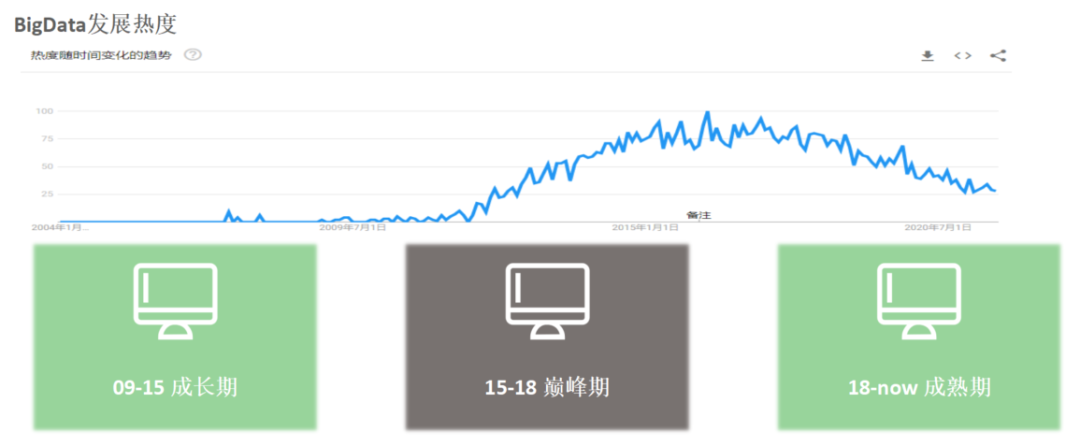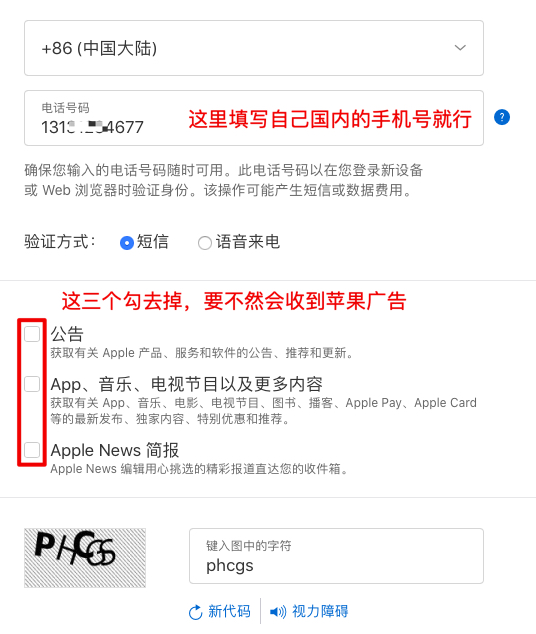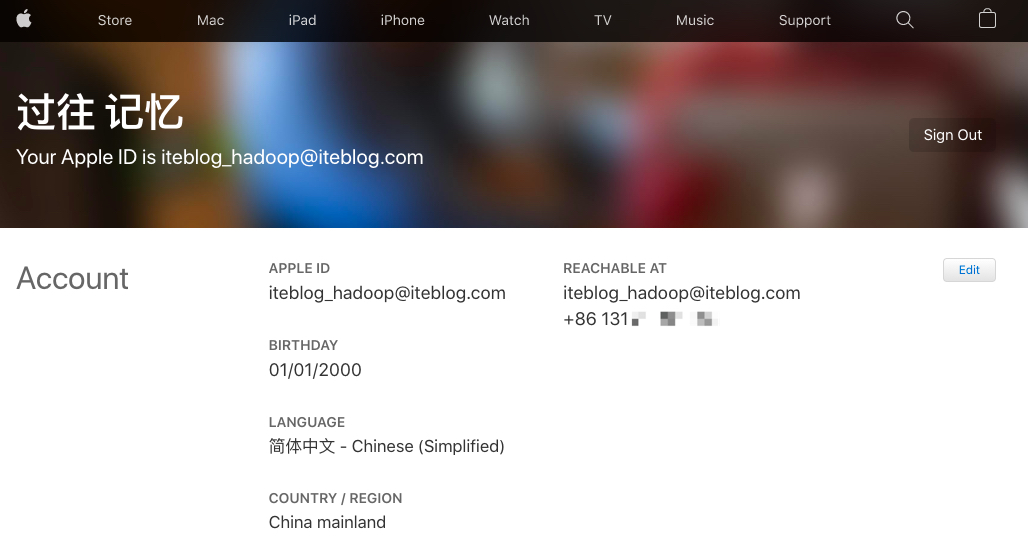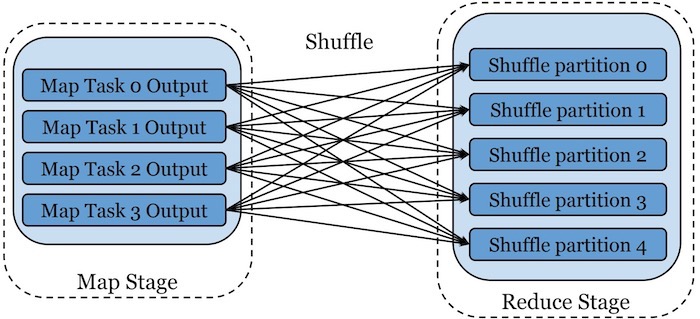文章目录
- 1 Q1 价格统计报告查询
- 2 Q2 最小代价供货商查询
- 3 Q3 运送优先级查询
- 4 Q4 订单优先级查询
- 5 Q5 某地区供货商为公司带来的收入查询
- 6 Q6 预测收入变化查询
- 7 Q7 货运盈利情况查询
- 8 Q8 国家市场份额查询
- 9 Q9 产品类型利润估量查询
- 10 Q10 货运存在问题的查询
- 11 Q11 库存价值查询
- 12 Q12 货运模式和订单优先级查询
- 13 Q13 消费者订单数量查询
- 14 Q14 促销效果查询
- 15 Q15 头等供货商查询
- 16 Q16 零件/供货商关系查询
- 17 Q17 小订单收入查询
- 18 Q18 大订单顾客查询
- 19 Q19 折扣收入查询
- 20 Q20 供货商竞争力查询
- 21 Q21 不能按时交货供货商查询
- 22 Q22 全球销售机会查询
TPCH(商业智能计算测试) 是美国交易处理效能委员会(TPC,Transaction Processing Performance Council) 组织制定的用来模拟决策支持类应用的一个测试集。目前在学术界和工业界普遍采用它来评价决策支持技术方面应用的性能。这种商业测试可以全方位评测系统的整体商业计算综合能力,对厂商的要求更高,同时也具有普遍的商业实用意义,目前在银行信贷分析和信用卡分析、电信运营分析、税收分析、烟草行业决策分析中都有广泛的应用。TPCH 测试一共有22条 SQL,本文将详细介绍这22条 SQL 的含义。
Q1 价格统计报告查询
Q1 语句是查询lineItems的一个定价总结报告。在单个表lineitem上查询某个时间段内,对已经付款的、已经运送的等各类商品进行统计,包括业务量的计费、发货、折扣、税、平均价格等信息。
Q1 语句的特点是:带有分组、排序、聚集操作并存的单表查询操作。这个查询会导致表上的数据有95%到97%行被读取到。
select
l_returnflag, #返回标志
l_linestatus,
sum(l_quantity) as sum_qty, #总的数量
sum(l_extendedprice) as sum_base_price, #聚集函数操作
sum(l_extendedprice * (1 - l_discount)) as sum_disc_price,
sum(l_extendedprice * (1 - l_discount) * (1 + l_tax)) as sum_charge,
avg(l_quantity) as avg_qty,
avg(l_extendedprice) as avg_price,
avg(l_discount) as avg_disc,
count(*) as count_order #每个分组所包含的行数
from
lineitem
where
l_shipdate <= date_sub('1998-12-01', interval 90 day) #时间段是随机生成的
group by
l_returnflag,
l_linestatus
order by
l_returnflag,
l_linestatus;
Q2 最小代价供货商查询
Q2 语句查询获得最小代价的供货商。得到给定的区域内,对于指定的零件(某一类型和大小的零件),哪个供应者能以最低的价格供应它,就可以选择哪个供应者来订货。
Q2 语句的特点是:带有排序、聚集操作、子查询并存的多表查询操作。查询语句没有从语法上限制返回多少条元组,但是TPC-H标准规定,查询结果只返回前100行(通常依赖于应用程序实现)。
select s_acctbal, # 帐户余额 s_name, # 名字 n_name, # 国家 p_partkey, # 零件的号码 p_mfgr, # 生产者 s_address, # 供应者的地址 s_phone, # 电话号码 s_comment # 备注信息 from part, supplier, partsupp, nation, region where p_partkey = ps_partkey and s_suppkey = ps_suppkey and p_size = 15 # 指定大小,在区间[1, 50]内随机选择 and p_type like '%BRASS' # 指定类型,在TPC-H标准指定的范围内随机选择 and s_nationkey = n_nationkey and n_regionkey = r_regionkey and r_name = 'EUROPE' # 指定地区,在TPC-H标准指定的范围内随机选择 and ps_supplycost = ( select min(ps_supplycost) # 聚集函数 from # 与父查询的表有重叠 partsupp, supplier, nation, region where p_partkey = ps_partkey and s_suppkey = ps_suppkey and s_nationkey = n_nationkey and n_regionkey = r_regionkey and r_name = 'EUROPE' ) order by s_acctbal desc, n_name, s_name, p_partkey limit 100;
Q3 运送优先级查询
Q3 语句查询得到收入在前10位的尚未运送的订单。在指定的日期之前还没有运送的订单中具有最大收入的订单的运送优先级(订单按照收入的降序排序)和潜在的收入(潜在的收入为l_extendedprice * (1-l_discount)的和)。
Q3 语句的特点是:带有分组、排序、聚集操作并存的三表查询操作。查询语句没有从语法上限制返回多少条元组,但是TPC-H标准规定,查询结果只返回前10行(通常依赖于应用程序实现)。
select l_orderkey, sum(l_extendedprice * (1 - l_discount)) as revenue, # 潜在的收入,聚集操作 o_orderdate, o_shippriority from customer, orders, lineitem where c_mktsegment = 'BUILDING' # 在TPC-H标准指定的范围内随机选择 and c_custkey = o_custkey and l_orderkey = o_orderkey and o_orderdate < '1995-03-15' # 指定日期段,在在[1995-03-01, 1995-03-31]中随机选择 and l_shipdate > '1995-03-15' # 指定日期段,在在[1995-03-01, 1995-03-31]中随机选择 group by l_orderkey, # 订单标识 o_orderdate, # 订单日期 o_shippriority # 运输优先级 order by revenue desc, # 降序排序,把潜在最大收入列在前面 o_orderdate limit 10;
Q4 订单优先级查询
Q4 语句查询得到订单优先级统计值。计算给定的某三个月的订单的数量,在每个订单中至少有一行由顾客在它的提交日期之后收到。
Q4 语句的特点是:带有分组、排序、聚集操作、子查询并存的单表查询操作。子查询是相关子查询。
select
o_orderpriority, # 订单优先级
count(*) as order_count # 订单优先级计数
from
orders
where
o_orderdate >= '1993-07-01'
and o_orderdate < date_add('1993-07-01', interval '3' month) # 指定订单的时间段--某三个月,DATE是在1993年1月和1997年10月之间随机选择的一个月的第一天
and exists (
select
*
from
lineitem
where
l_orderkey = o_orderkey
and l_commitdate < l_receiptdate
)
group by
o_orderpriority # 按订单优先级分组
order by
o_orderpriority; # 按订单优先级排序
Q5 某地区供货商为公司带来的收入查询
Q5 语句查询得到通过某个地区零件供货商而获得的收入(收入按sum(l_extendedprice * (1 -l_discount))计算)统计信息。可用于决定在给定的区域是否需要建立一个当地分配中心。
Q5 语句的特点是:带有分组、排序、聚集操作、子查询并存的多表连接查询操作。
select
n_name,
sum(l_extendedprice * (1 - l_discount)) as revenue
from
customer,
orders,
lineitem,
supplier,
nation,
region
where
c_custkey = o_custkey
and l_orderkey = o_orderkey
and l_suppkey = s_suppkey
and c_nationkey = s_nationkey
and s_nationkey = n_nationkey
and n_regionkey = r_regionkey
and r_name = 'ASIA' # 指定地区,在TPC-H标准指定的范围内随机选择
and o_orderdate >= '1994-01-01' # DATE是从1993年到1997年中随机选择的一年的1月1日
and o_orderdate < date_add('1994-01-01', interval '1' year)
group by
n_name # 按名字分组
order by
revenue desc; # 按收入降序排序,注意分组和排序子句不同
Q6 预测收入变化查询
Q6 语句查询得到某一年中通过变换折扣带来的增量收入。这是典型的“what-if”判断,用来寻找增加收入的途径。预测收入变化查询考虑了指定的一年中折扣在“DISCOUNT-0.01”和“DISCOUNT+0.01”之间的已运送的所有订单,求解把l_quantity小于quantity的订单的折扣消除之后总收入增加的数量。
Q6 语句的特点是:带有聚集操作的单表查询操作。查询语句使用了BETWEEN-AND操作符,有的数据库可以对BETWEEN-AND进行优化。
select
sum(l_extendedprice * l_discount) as revenue # 潜在的收入增加量
from
lineitem
where
l_shipdate >= '1994-01-01' # DATE是从[1993, 1997]中随机选择的一年的1月1日
and l_shipdate < date_add('1994-01-01', interval '1' year) # 一年内
and l_discount between 0.06 - 0.01 and 0.06 + 0.01
and l_quantity < 24; # QUANTITY在区间[24, 25]中随机选择
Q7 货运盈利情况查询
Q7 语句是查询从供货商国家与销售商品的国家之间通过销售获利情况的查询。此查询确定在两国之间货运商品的量用以帮助重新谈判货运合同。
Q7 语句的特点是:带有分组、排序、聚集、子查询操作并存的多表查询操作。子查询的父层查询不存在其他查询对象,是格式相对简单的子查询。
select supp_nation, # 供货商国家 cust_nation, # 顾客国家 l_year, sum(volume) as revenue # 年度、年度的货运收入 from ( select n1.n_name as supp_nation, n2.n_name as cust_nation, extract(year from l_shipdate) as l_year, l_extendedprice * (1 - l_discount) as volume from supplier, lineitem, orders, customer, nation n1, nation n2 where s_suppkey = l_suppkey and o_orderkey = l_orderkey and c_custkey = o_custkey and s_nationkey = n1.n_nationkey and c_nationkey = n2.n_nationkey and ( # NATION2和NATION1的值不同,表示查询的是跨国的货运情况 (n1.n_name = 'FRANCE' and n2.n_name = 'GERMANY') or (n1.n_name = 'GERMANY' and n2.n_name = 'FRANCE') ) and l_shipdate between '1995-01-01' and '1996-12-31' ) as shipping group by supp_nation, cust_nation, l_year order by supp_nation, cust_nation, l_year;
Q8 国家市场份额查询
Q8 语句是查询在过去的两年中一个给定零件类型在某国某地区市场份额的变化情况。
Q8 语句的特点是:带有分组、排序、聚集、子查询操作并存的查询操作。子查询的父层查询不存在其他查询对象,是格式相对简单的子查询,但子查询自身是多表连接的查询。
TPC-H标准定义了Q8语句等价的变形SQL,与上述查询语句格式上基本相同,主要是目标列使用了不同的表达方式,在此不再赘述。
select o_year, # 年份 sum(case when nation = 'BRAZIL' then volume # 指定国家,在TPC-H标准指定的范围内随机选择 else 0 end) / sum(volume) as mkt_share # 市场份额:特定种类的产品收入的百分比;聚集操作 from ( select extract(year from o_orderdate) as o_year, # 分解出年份 l_extendedprice * (1 - l_discount) as volume, # 特定种类的产品收入 n2.n_name as nation from part, supplier, lineitem, orders, customer, nation n1, nation n2, region where p_partkey = l_partkey and s_suppkey = l_suppkey and l_orderkey = o_orderkey and o_custkey = c_custkey and c_nationkey = n1.n_nationkey and n1.n_regionkey = r_regionkey and r_name = 'AMERICA' # 指定地区,在TPC-H标准指定的范围内随机选择 and s_nationkey = n2.n_nationkey and o_orderdate between '1995-01-01' and '1996-12-31' # 只查95、96年的情况 and p_type = 'ECONOMY ANODIZED STEEL' # 指定零件类型,在TPC-H标准指定的范围内随机选择 ) as all_nations group by o_year # 按年分组 order by o_year; # 按年排序
Q9 产品类型利润估量查询
Q9 语句是查询每个国家每一年所有被定购的零件在一年中的总利润。
Q9 语句的特点是:带有分组、排序、聚集、子查询操作并存的查询操作。子查询的父层查询不存在其他查询对象,是格式相对简单的子查询,但子查询自身是多表连接的查询。子查询中使用了LIKE操作符,有的查询优化器不支持对LIKE操作符进行优化。
select nation, o_year, sum(amount) as sum_profit # 每个国家每一年所有被定购的零件在一年中的总利润 from ( select n_name as nation, # 国家 extract(year from o_orderdate) as o_year, # 取出年份 l_extendedprice * (1 - l_discount) - ps_supplycost * l_quantity as amount # 利润 from part, supplier, lineitem, partsupp, orders, nation where s_suppkey = l_suppkey and ps_suppkey = l_suppkey and ps_partkey = l_partkey and p_partkey = l_partkey and o_orderkey = l_orderkey and s_nationkey = n_nationkey and p_name like '%green%' # LIKE操作,查询优化器可能进行优化 ) as profit group by nation, # 国家 o_year # 年份 order by nation, o_year desc;
Q10 货运存在问题的查询
Q10 语句是查询每个国家在某时刻起的三个月内货运存在问题的客户和造成的损失。
Q10 语句的特点是:带有分组、排序、聚集操作并存的多表连接查询操作。查询语句没有从语法上限制返回多少条元组,但是TPC-H标准规定,查询结果只返回前10行(通常依赖于应用程序实现)。
select
c_custkey, # 客户信息
c_name, # 客户信息
sum(l_extendedprice * (1 - l_discount)) as revenue, # 收入损失
c_acctbal,
n_name, # 国家
c_address,# 地址
c_phone, # 电话
c_comment
from
customer,
orders,
lineitem,
nation
where
c_custkey = o_custkey
and l_orderkey = o_orderkey
and o_orderdate >= '1993-10-01' # DATE是位于1993年一月到1994年十二月中任一月的一号
and o_orderdate < date_add('1993-10-01', interval '3' month) # 3个月内
and l_returnflag = 'R' # 货物被回退
and c_nationkey = n_nationkey
group by
c_custkey,
c_name,
c_acctbal,
c_phone,
n_name,
c_address,
c_comment
order by
revenue desc
limit 20;
Q11 库存价值查询
Q11 语句是查询库存中某个国家供应的零件的价值。
Q11 语句的特点是:带有分组、排序、聚集、子查询操作并存的多表连接查询操作。子查询位于分组操作的HAVING条件中。
select ps_partkey, sum(ps_supplycost * ps_availqty) as value # 聚集操作,商品的总价值 from partsupp, supplier, nation where ps_suppkey = s_suppkey and s_nationkey = n_nationkey and n_name = 'GERMANY' group by ps_partkey having # 带有HAVING子句的分组操作 sum(ps_supplycost * ps_availqty) > ( # HAVING子句中包括有子查询 select sum(ps_supplycost * ps_availqty) * 0.0001000000 # 子查询中存在聚集操作;FRACTION为0.0001/SF1 from # 与父查询的表连接一致 partsupp, supplier, nation where # 与父查询的WHEWR条件一致 ps_suppkey = s_suppkey and s_nationkey = n_nationkey and n_name = 'GERMANY' ) order by # 按商品的价值降序排序 value desc;
Q12 货运模式和订单优先级查询
Q12 语句查询获得货运模式和订单优先级。可以帮助决策:选择便宜的货运模式是否会导致消费者更多的在合同日期之后收到货物,而对紧急优先命令产生负面影响。
Q12 语句的特点是:带有分组、排序、聚集操作并存的两表连接查询操作。
TPC-H标准定义了Q12语句等价的变形SQL,与上述查询语句格式上基本相同,主要是目标列使用了不同的表达方式,在此不再赘述。
select
l_shipmode,
sum(case
when o_orderpriority = '1-URGENT' # OR运算,二者满足其一即可,选出URGENT或HIGH的
or o_orderpriority = '2-HIGH'
then 1
else 0
end) as high_line_count,
sum(case
when o_orderpriority <> '1-URGENT' # AND运算,二者都不满足,非URGENT非HIGH的
and o_orderpriority <> '2-HIGH'
then 1
else 0
end) as low_line_count
from
orders,
lineitem
where
o_orderkey = l_orderkey
and l_shipmode in ('MAIL', 'SHIP') # 指定货运模式的类型,在TPC-H标准指定的范围内随机选择,SHIPMODE2必须有别于SHIPMODE1
and l_commitdate < l_receiptdate
and l_shipdate < l_commitdate
and l_receiptdate >= '1994-01-01' # 从1993年到1997年中任一年的一月一号
and l_receiptdate < date_add('1994-01-01', interval '1' year) # 1年内
group by
l_shipmode
order by
l_shipmode;
Q13 消费者订单数量查询
Q13 语句查询获得消费者的订单数量,包括过去和现在都没有订单记录的消费者。
Q13 语句的特点是:带有分组、排序、聚集、子查询、左外连接操作并存的查询操作。 TPC-H标准定义了Q13语句等价的变形SQL,与上述查询语句格式上不相同,上述语句使用子查询作为查询的对象,变形的SQL把子查询部分变为视图,然后基于视图做查询,这种做法的意义在于有些数据库不支持如上语法,但存在等价的其他语法
select c_count, count(*) as custdist from ( select c_custkey, count(o_orderkey) as c_count from # 子查询中包括左外连接操作 customer left outer join orders on c_custkey = o_custkey and o_comment not like '%special%requests%' # WORD1 为以下四个可能值中任意一个:special、pending、unusual、express # WORD2 为以下四个可能值中任意一个:packages、requests、accounts、deposits group by c_custkey ) c_orders group by c_count order by custdist desc, c_count desc;
Q14 促销效果查询
Q14 语句查询获得某一个月的收入中有多大的百分比是来自促销零件。用以监视促销带来的市场反应。
Q14 语句的特点是:带有分组、排序、聚集、子查询、左外连接操作并存的查询操作。
TPC-H标准定义了Q14语句等价的变形SQL,与上述查询语句格式上基本相同,主要是目标列使用了不同的表达方式,在此不再赘述。
select
100.00 * sum(case
when p_type like 'PROMO%' # 促销零件
then l_extendedprice * (1 - l_discount) # 某一特定时间的收入
else 0
end) / sum(l_extendedprice * (1 - l_discount)) as promo_revenue
from
lineitem,
part
where
l_partkey = p_partkey
and l_shipdate >= '1995-09-01' # DATE是从1993年到1997年中任一年的任一月的一号
and l_shipdate < date_add('1995-09-01', interval '1' month);
Q15 头等供货商查询
Q15 语句查询获得某段时间内为总收入贡献最多的供货商(排名第一)的信息。可用以决定对哪些头等供货商给予奖励、给予更多订单、给予特别认证、给予鼓舞等激励。
Q15 语句的特点是:带有分排序、聚集、聚集子查询操作并存的普通表与视图的连接操作。
create view revenue0 (supplier_no, total_revenue) as # 创建复杂视图(带有分组操作)
select
l_suppkey,
sum(l_extendedprice * (1 - l_discount)) # 获取供货商为公司带来的总利润
from
lineitem
where
l_shipdate >= '1996-01-01' # DATE 是从1993年一月到1997年十月中任一月的一号
and l_shipdate < date_add('1996-01-01', interval '3' month) # 3个月内
group by # 分组键与查询对象之一相同
l_suppkey;
select
s_suppkey,
s_name,
s_address,
s_phone,
total_revenue
from
supplier,
revenue0 # 普通表与复杂视图进行连接操作
where
s_suppkey = supplier_no # 聚集子查询
and total_revenue = (
select
max(total_revenue)
from
revenue0 # 聚集子查询从视图获得数据
)
order by
s_suppkey;
drop view revenue0;
Q16 零件/供货商关系查询
Q16 语句查询获得能够以指定的贡献条件供应零件的供货商数量。可用于决定在订单量大,任务紧急时,是否有充足的供货商。
Q16 语句的特点是:带有分组、排序、聚集、去重、NOT IN子查询操作并存的两表连接操作。
select p_brand, p_type, p_size, count(distinct ps_suppkey) as supplier_cnt # 聚集、去重操作 from partsupp, part where p_partkey = ps_partkey and p_brand <> 'Brand#45' # BRAND=Brand#MN ,M和N是两个字母,代表两个数值,相互独立,取值在1到5之间 and p_type not like 'MEDIUM POLISHED%' # 消费者不感兴趣的类型和尺寸 and p_size in (49, 14, 23, 45, 19, 3, 36, 9) # TYPEX是在1到50之间任意选择的一组八个不同的值 and ps_suppkey not in ( # NOT IN子查询,消费者排除某些供货商 select s_suppkey from supplier where s_comment like '%Customer%Complaints%' ) group by p_brand, p_type, p_size order by # 按数量降序排列,按品牌、种类、尺寸升序排列 supplier_cnt desc, p_brand, p_type, p_size;
Q17 小订单收入查询
Q17 语句查询获得比平均供货量的百分之二十还低的小批量订单。对于指定品牌和指定包装类型的零件,决定在一个七年数据库的所有订单中这些订单零件的平均项目数量(过去的和未决的)。如果这些零件中少于平均数20%的订单不再被接纳,那平均一年会损失多少呢?所以此查询可用于计算出如果没有没有小量订单,平均年收入将损失多少(因为大量商品的货运,将降低管理费用)。
Q17 语句的特点是:带有聚集、聚集子查询操作并存的两表连接操作。
select sum(l_extendedprice) / 7.0 as avg_yearly from lineitem, part where p_partkey = l_partkey and p_brand = 'Brand#23' # 指定品牌。 BRAND=’Brand#MN’ ,M和N是两个字母,代表两个数值,相互独立,取值在1到5之间 and p_container = 'MED BOX' # 指定包装类型。在TPC-H标准指定的范围内随机选择 and l_quantity < ( select 0.2 * avg(l_quantity) from lineitem where l_partkey = p_partkey );
Q18 大订单顾客查询
Q18 语句查询获得比指定供货量大的供货商信息。可用于决定在订单量大,任务紧急时,验证否有充足的供货商。
Q18 语句的特点是:带有分组、排序、聚集、IN子查询操作并存的三表连接操作。查询语句没有从语法上限制返回多少条元组,但是TPC-H标准规定,查询结果只返回前100行(通常依赖于应用程序实现)。
select c_name, c_custkey, o_orderkey, o_orderdate, o_totalprice, sum(l_quantity) # 订货总数 from customer, orders, lineitem where o_orderkey in ( select l_orderkey from lineitem group by l_orderkey having sum(l_quantity) > 300 # QUANTITY是位于312到315之间的任意值 ) and c_custkey = o_custkey and o_orderkey = l_orderkey group by c_name, c_custkey, o_orderkey, o_orderdate, o_totalprice order by o_totalprice desc, o_orderdate limit 100;
Q19 折扣收入查询
Q19 语句查询得到对一些空运或人工运输零件三个不同种类的所有订单的总折扣收入。零件的选择考虑特定品牌、包装和尺寸范围。本查询是用数据挖掘工具产生格式化代码的一个例子。
Q19 语句的特点是:带有分组、排序、聚集、IN子查询操作并存的三表连接操作
select
sum(l_extendedprice* (1 - l_discount)) as revenue
from
lineitem,
part
where
(
p_partkey = l_partkey
and p_brand = 'Brand#12' # 特定品牌。BRAND1、BRAND2、BRAND3=‘Brand#MN’,M和N是两个字母,代表两个数值,相互独立,取值在1到5之间
and p_container in ('SM CASE', 'SM BOX', 'SM PACK', 'SM PKG') # 包装范围
and l_quantity >= 1 and l_quantity <= 1 + 10 # QUANTITY1 是1到10之间的任意取值
and p_size between 1 and 5 # 尺寸范围
and l_shipmode in ('AIR', 'AIR REG') # 运输模式,如下带有阴影的粗体表示的条件是相同的,存在条件化简的可能
and l_shipinstruct = 'DELIVER IN PERSON'
)
or
(
p_partkey = l_partkey
and p_brand = 'Brand#23'
and p_container in ('MED BAG', 'MED BOX', 'MED PKG', 'MED PACK')
and l_quantity >= 10 and l_quantity <= 10 + 10 # QUANTITY2 是10到20之间的任意取值
and p_size between 1 and 10
and l_shipmode in ('AIR', 'AIR REG')
and l_shipinstruct = 'DELIVER IN PERSON'
)
or
(
p_partkey = l_partkey
and p_brand = 'Brand#34'
and p_container in ('LG CASE', 'LG BOX', 'LG PACK', 'LG PKG')
and l_quantity >= 20 and l_quantity <= 20 + 10 # QUANTITY3 是20到30之间的任意取值
and p_size between 1 and 15
and l_shipmode in ('AIR', 'AIR REG')
and l_shipinstruct = 'DELIVER IN PERSON'
);
Q20 供货商竞争力查询
Q20 语句查询确定在某一年内,找出指定国家的能对某一零件商品提供更有竞争力价格的供货货。所谓更有竞争力的供货商,是指那些零件有过剩的供货商,超过供或商在某一年中货运给定国的某一零件的50%则为过剩。
Q20 语句的特点是:带有排序、聚集、IN子查询、普通子查询操作并存的两表连接操作。
select
s_name,
s_address
from
supplier,
nation
where
s_suppkey in ( # 第一层的IN子查询
select
ps_suppkey
from
partsupp
where
ps_partkey in ( # 第二层嵌套的IN子查询
select
p_partkey
from
part
where
p_name like 'forest%' # COLOR为产生P_NAME的值的列表中的任意值
)
and ps_availqty > ( # 第二层嵌套的子查询
select
0.5 * sum(l_quantity) # 聚集子查询
from
lineitem
where
l_partkey = ps_partkey
and l_suppkey = ps_suppkey
and l_shipdate >= '1994-01-01' # DATE为在1993年至1997年的任一年的一月一号
and l_shipdate < date_add('1994-01-01', interval '1' year) # 1年内
)
)
and s_nationkey = n_nationkey
and n_name = 'CANADA' # TPC-H标准定义的任意值
order by
s_name;
Q21 不能按时交货供货商查询
Q21 语句查询获得不能及时交货的供货商。
Q21 语句的特点是:带有分组、排序、聚集、EXISTS子查询、NOT EXISTS子查询操作并存的四表连接操作。查询语句没有从语法上限制返回多少条元组,但是TPC-H标准规定,查询结果只返回前100行(通常依赖于应用程序实现)。
select s_name, count(*) as numwait from supplier, lineitem l1, orders, nation where s_suppkey = l1.l_suppkey and o_orderkey = l1.l_orderkey and o_orderstatus = 'F' and l1.l_receiptdate > l1.l_commitdate and exists ( # EXISTS子查询 select * from lineitem l2 where l2.l_orderkey = l1.l_orderkey and l2.l_suppkey <> l1.l_suppkey ) and not exists (# NOT EXISTS子查询 select * from lineitem l3 where l3.l_orderkey = l1.l_orderkey and l3.l_suppkey <> l1.l_suppkey and l3.l_receiptdate > l3.l_commitdate ) and s_nationkey = n_nationkey and n_name = 'SAUDI ARABIA' # TPC-H标准定义的任意值 group by s_name order by numwait desc, s_name limit 100;
Q22 全球销售机会查询
Q22 语句查询获得消费者可能购买的地理分布。本查询计算在指定的国家,比平均水平更持肯定态度但还没下七年订单的消费者数量。能反应出普通消费者的的态度,即购买意向。
Q22 语句的特点是:带有分组、排序、聚集、EXISTS子查询、NOT EXISTS子查询操作并存的四表连接操作。
select
cntrycode,
count(*) as numcust,
sum(c_acctbal) as totacctbal
from
( # 第一层子查询
select
substring(c_phone from 1 for 2) as cntrycode,
c_acctbal
from
customer
where
substring(c_phone from 1 for 2) in
('13', '31', '23', '29', '30', '18', '17') # I1…I7是在TPC-H中定义国家代码的可能值中不重复的任意值
and c_acctbal > ( # 第二层聚集子查询
select
avg(c_acctbal)
from
customer
where
c_acctbal > 0.00
and substring(c_phone from 1 for 2) in
('13', '31', '23', '29', '30', '18', '17')
)
and not exists ( # 第二层NOT EXISTS子查询
select
*
from
orders
where
o_custkey = c_custkey
)
) as custsale
group by
cntrycode
order by
cntrycode;
本博客文章除特别声明,全部都是原创!原创文章版权归过往记忆大数据(过往记忆)所有,未经许可不得转载。
本文链接: 【TPCH SQL 含义解析】(https://www.iteblog.com/archives/1862.html)









